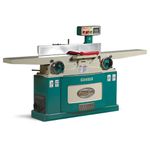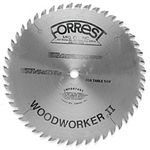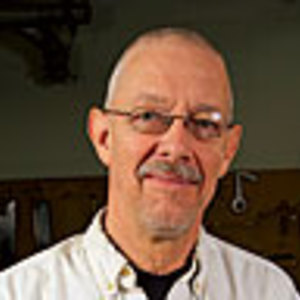Making Three-Phase Machines Work in a One-Phase Shop
Joh White breaks down the three basic types of converters that'll get a three-phase machine running in a home shop: static, rotary and electronicQ:
Most heavy machinery is designed to be run on three-phase electrical power, but a number of options are available to get the tools running in your one-phase home shop.
I am thinking of buying some used industrial equipment from a local cabinetmaker, but all of the machines have three-phase motors. This is for my home shop, where I have only single-phase power. Is there anything I can do to convert these machines to operate on single-phase power?
Franklin Maeve, San Diego, CA
A:
Most heavy machinery is designed to be run on three-phase electrical power because three-phase motors are simpler, more efficient and sturdier than single-phase motors. Unfortunately, three-phase power generally is not available in residential areas, but it may be worth checking with your power company. Even if it is available, the cost of connecting may be financially prohibitive.
Short of running three-phase power, there are a number of options available to get a three-phase tool running on single-phase power. The first and most obvious option is to replace the machine’s motor with a single-phase unit. But this may not be possible on some machines because the original motor has special mounting brackets or the drive shaft has custom threads or splines. Unfortunately, specialized motors are fairly common on tablesaws. If the tool’s manufacturer is still in business, you may be able to obtain a single-phase motor from them.
More on Machinery
Upgrade Your Jointer with a Segmented Cutterhead
Vintage Machinery: New Life for Old Iron
Smart Dust Collection for Your Bandsaw
Another option is to use a converter that will allow you to run a three-phase machine on single-phase power. There are three basic types of converters: static, rotary and electronic.
Of the three, the static type is the least expensive. A static converter has no moving parts and needs to be sized for the motor it’s running. Unfortunately, a static converter reduces the available horsepower of the motor by about a third and has difficulty starting air compressors, dust collectors, large bandsaws and other machines with heavy starting loads. The reduced horsepower often isn’t a problem and can be compensated for by reducing the feed rate or by taking lighter cuts. But overloading or stalling a motor hooked up to a static converter will cause destructive overheating of both the motor and the converter. A hard-to-start machine can be run by first starting another lightly loaded machine, an “idler” that serves as an electrical flywheel to start the second machine. A surplus three-phase motor can be used as a dedicated idler that runs continuously to improve both the starting and the running of other motors hooked up to a static converter.
A rotary converter, which looks like a heavy-duty electric motor with an over-sized junction box attached, functions as both a motor and a generator. As a rotary converter is spun by single-phase power, it generates three-phase power to run other machines. More expensive than a static converter, a rotary converter costs around $600 for a 3-hp unit but doesn’t have the starting and reduced-power problems that occur with a static converter. If you expect to own several three-phase machines, buy a good-sized rotary converter, which will be more economical in the long run.
An electronic converter is more properly called an inverter for technical reasons, and most catalogs will list this device under that name. An electronic inverter transforms single-phase power into direct current and then uses microchip-guided controls to simulate three-phase alternating current. The electronics in an inverter allow you to control the motor’s speed, torque and direction of rotation, and often allow for a soft start to bring the machine up to speed gradually. Most of the added control offered by an inverter would be wasted on a tablesaw but would be a great advantage on a lathe or possibly a bandsaw. Because it must be programmed, an inverter typically is dedicated to running only one machine, but with some compromises, it can be used to run several tools. The price of inverters has been dropping steadily over the last few years.
Choosing the right type and size of converter and hooking it up correctly can be complicated. You should do some research and get more advice before investing in a converter or an inverter. Manufacturers of converters and inverters offer extensive literature and phone consultations.
Manufacturers of converters and inverters
All of the companies below sell static or rotary converters or both. Only Grainger sells inverters.
Ameri-Phase Corporation
800-920-1926
Cedarberg Industries
800-328-2279
Grizzly Industrial
800-523-4777
www.grizzly.com
GWM Corporation
800-437-4273
Kay Industries
800-348-5257
www.kayind.com
MSC Industrial Supply Co.
800-645-7270
www.mscdirect.com
From Fine Woodworking #158,
pp. 90-92
Fine Woodworking Recommended Products

Grizzly G0495X Industrial Helical Cutterhead 8-in. Jointer

Forrest Woodworker II Blade

Hedgehog featherboards























Log in or create an account to post a comment.
Sign up Log in